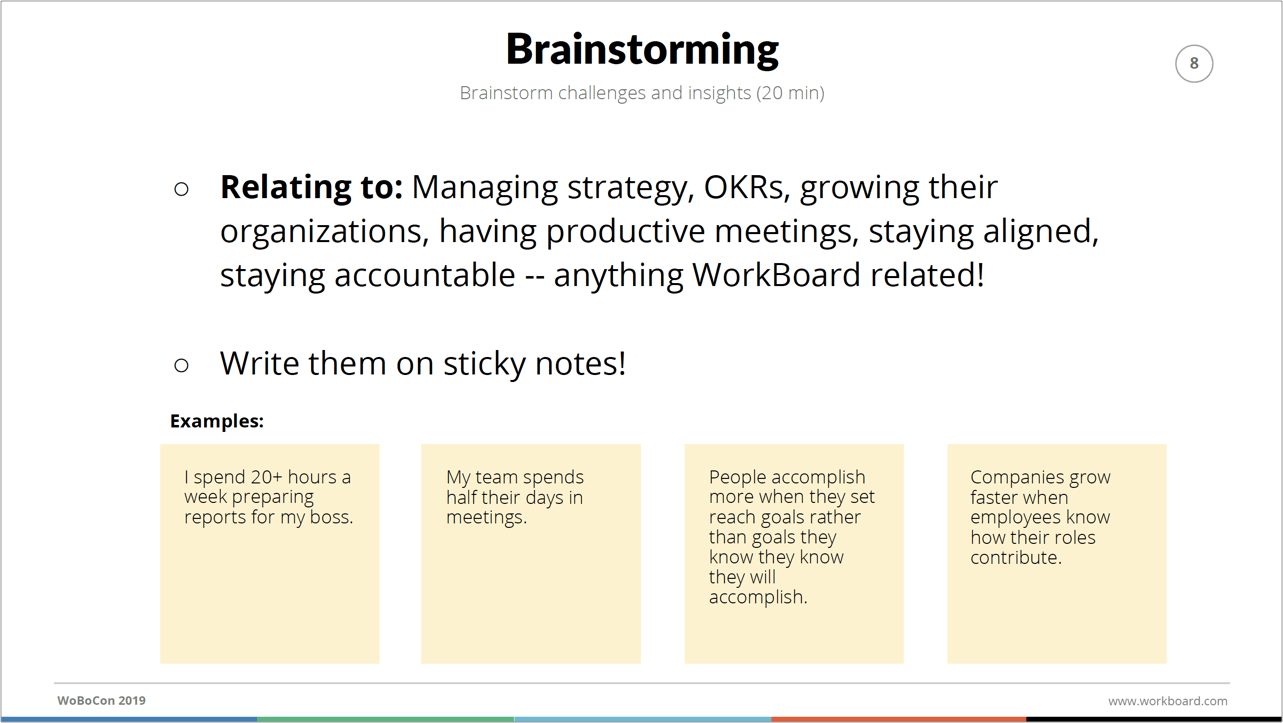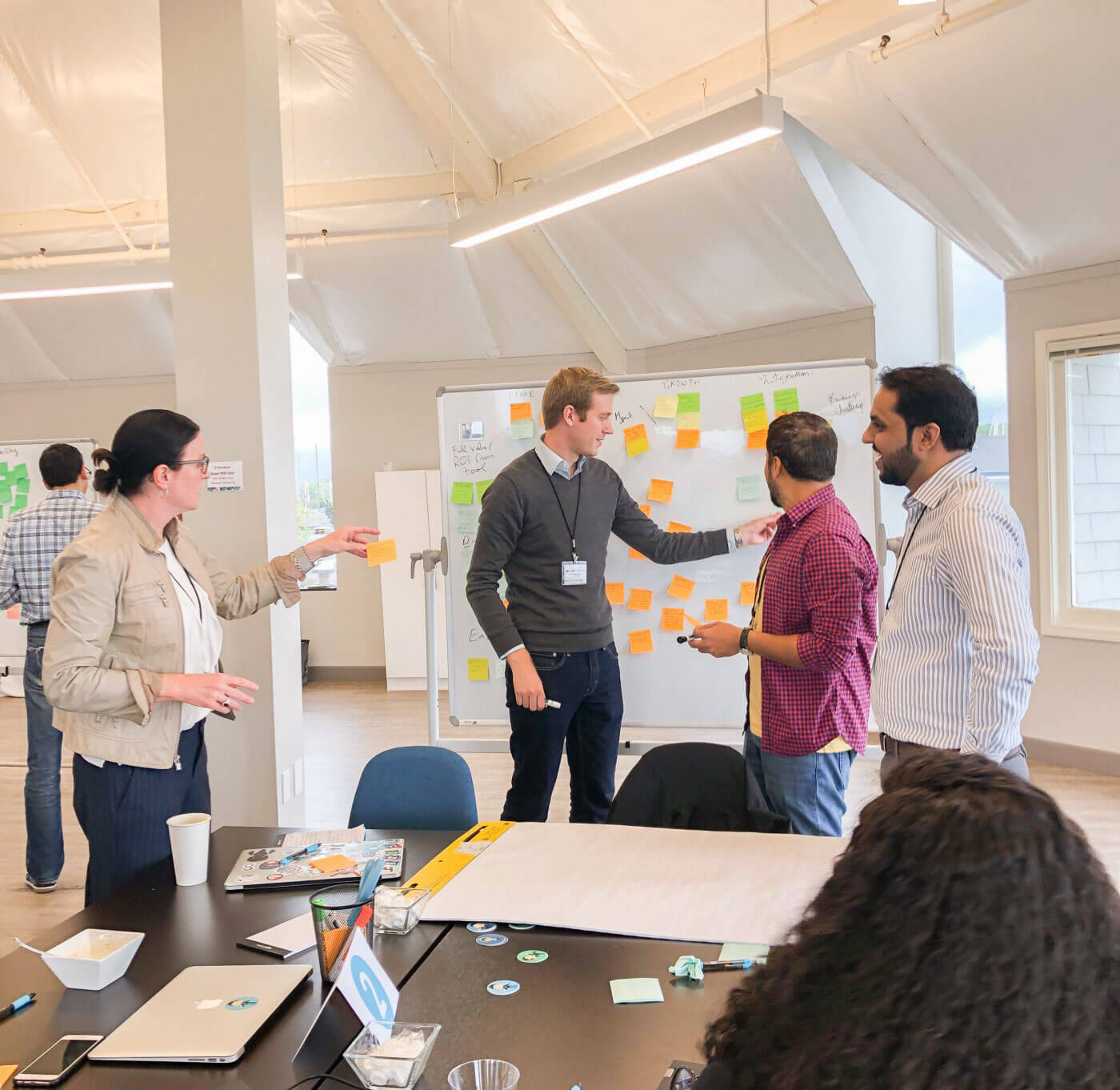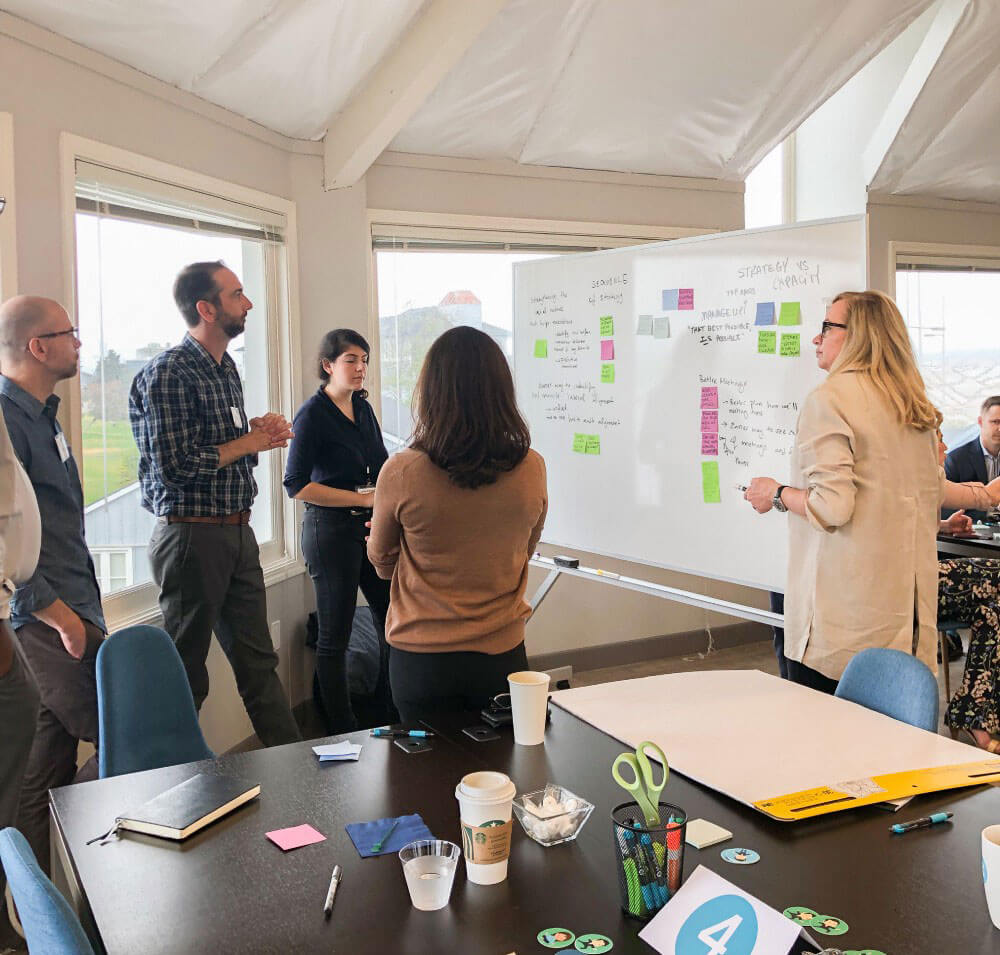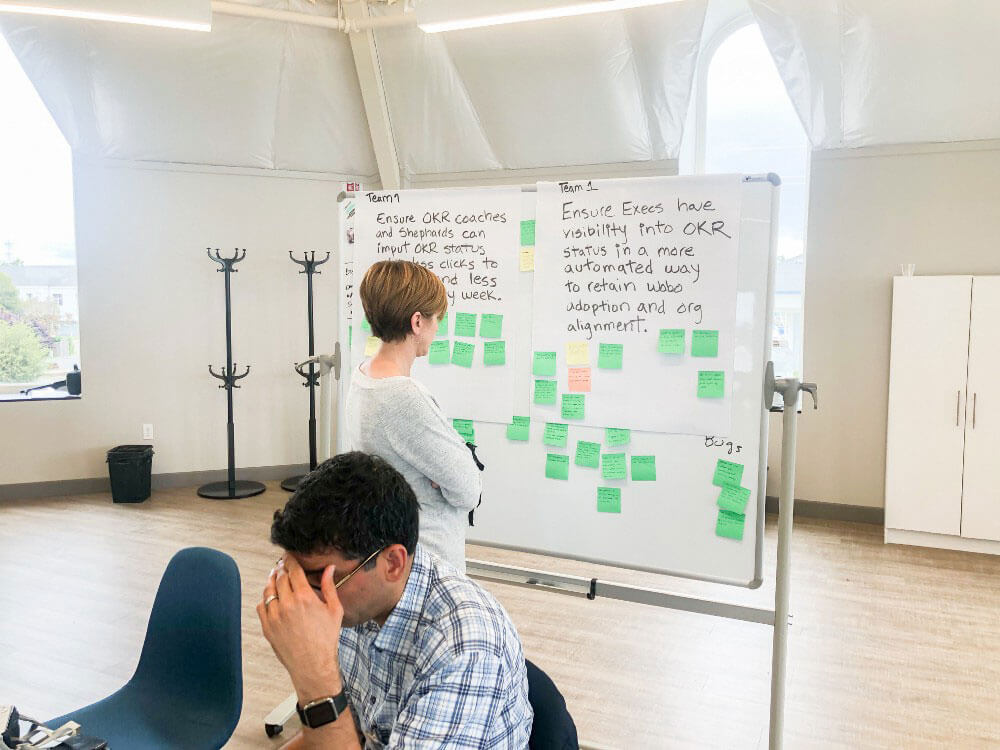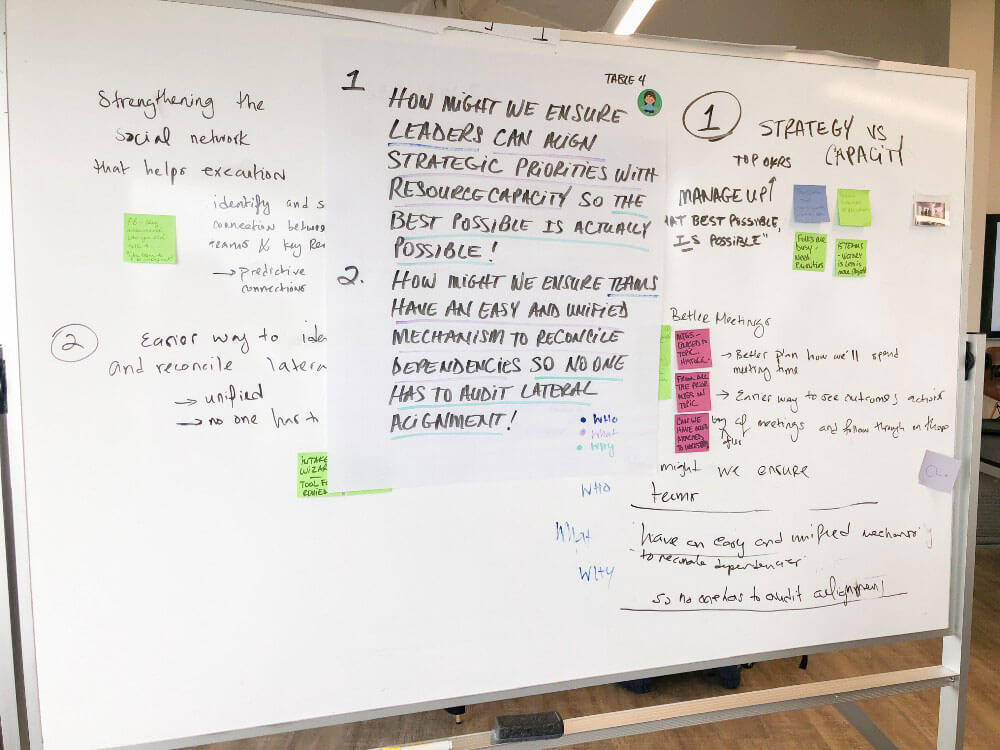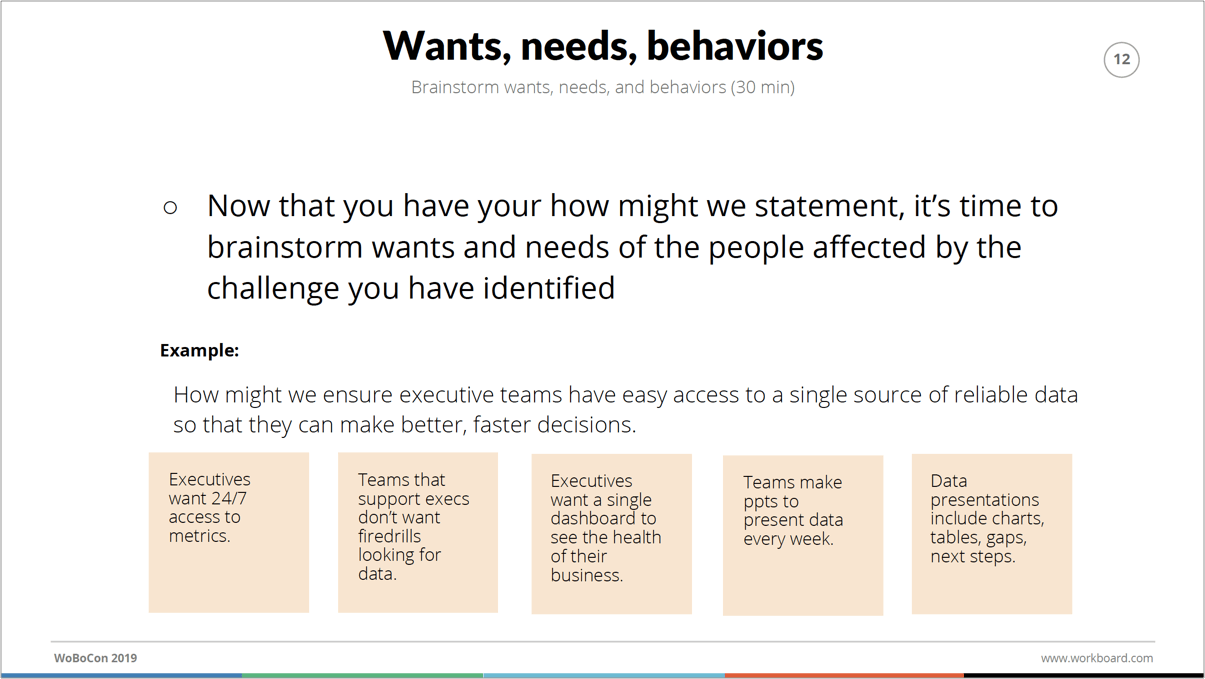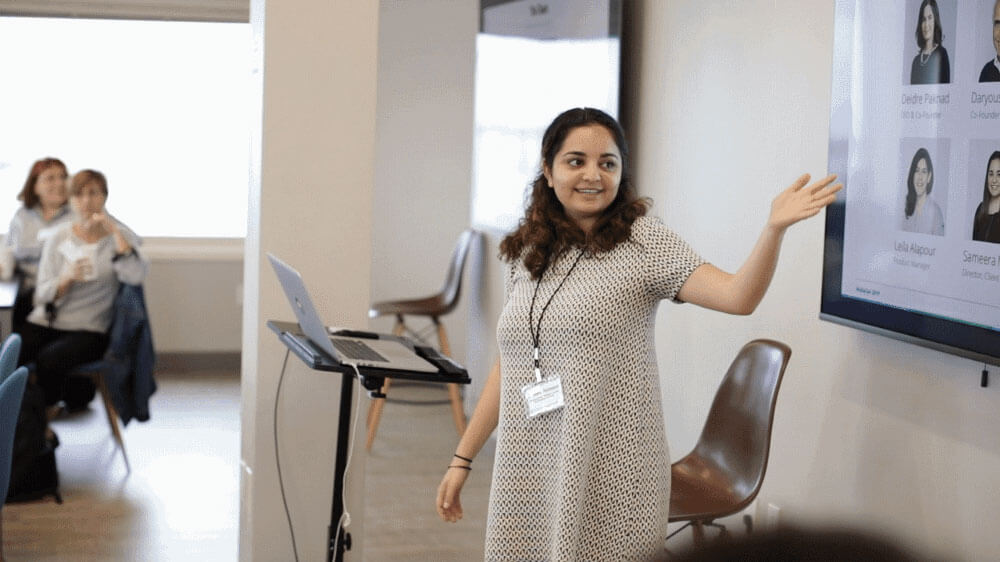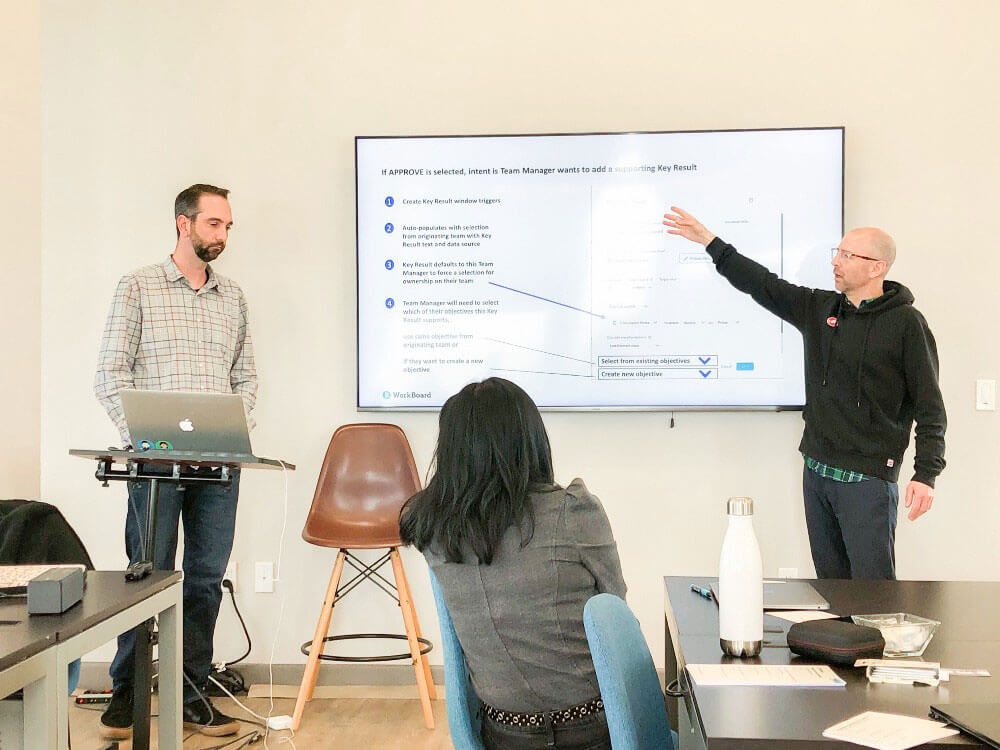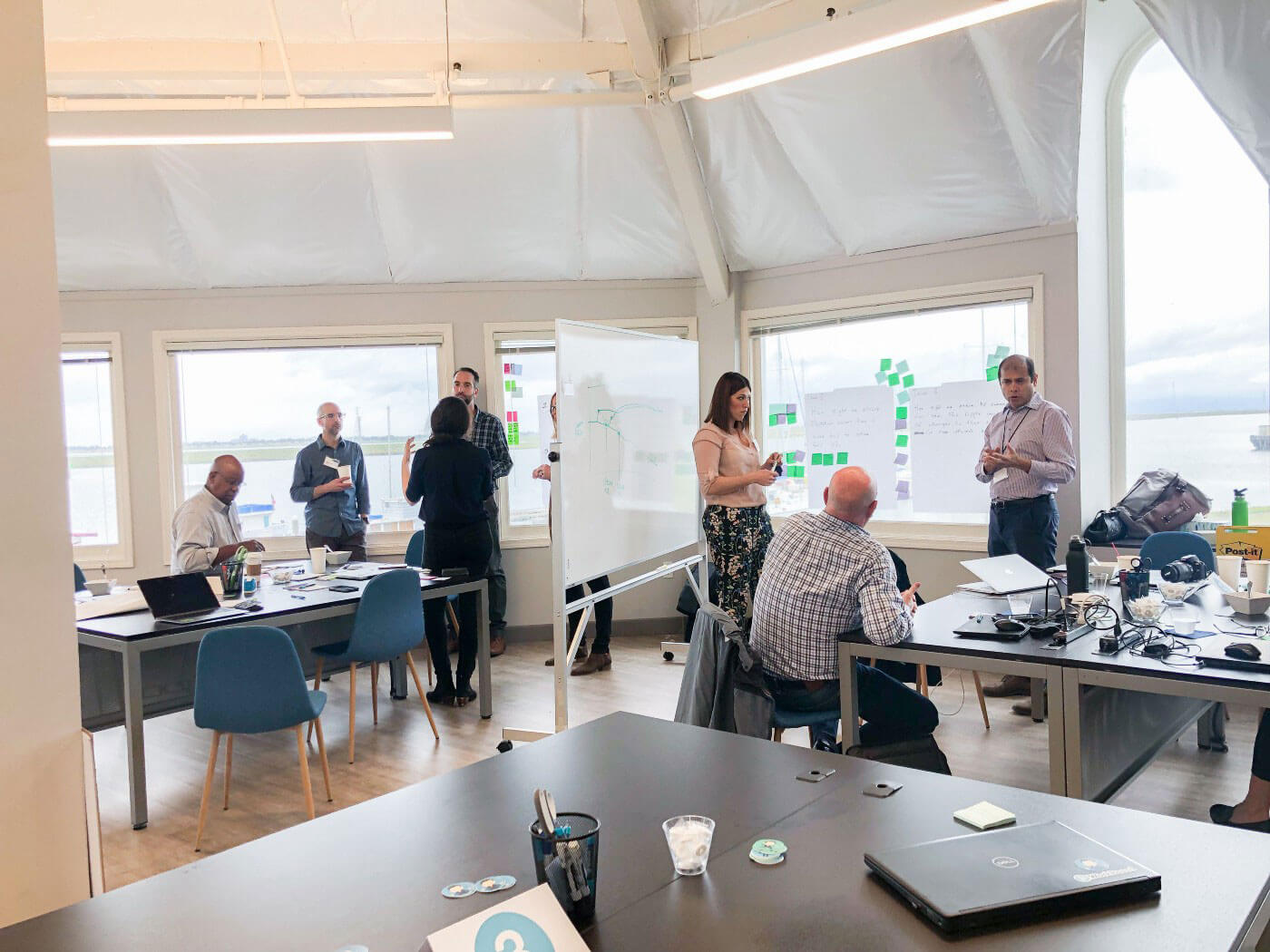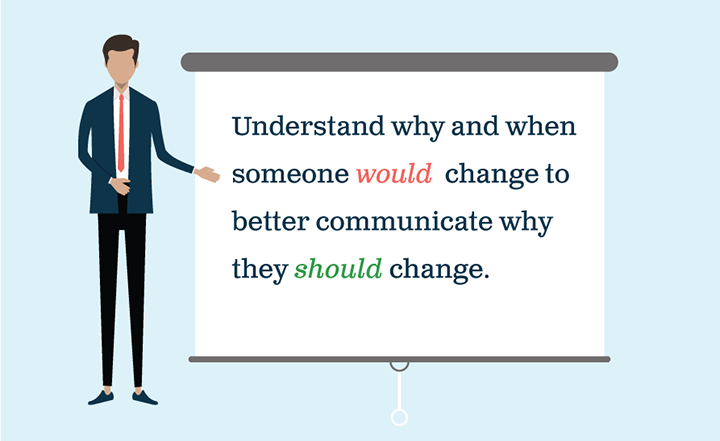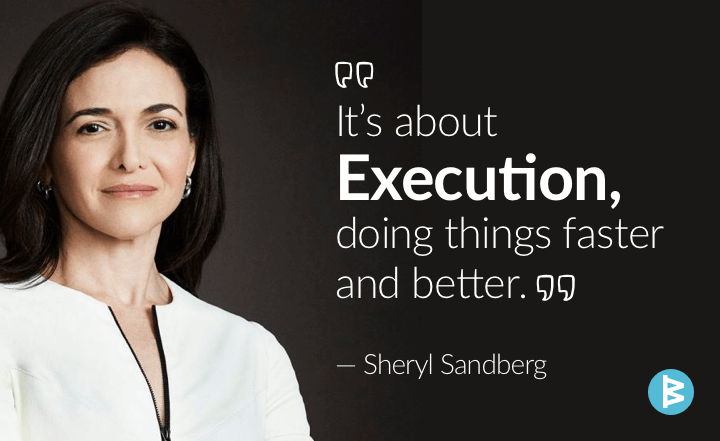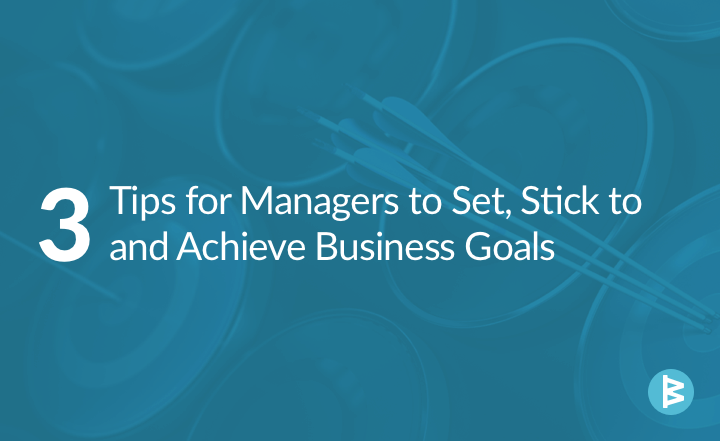We just hosted our first hackathon (WoBoCon!) at WorkBoard with some of our key users — and I am so excited about it. Hosting codesigning sessions with users is an essential practice for design and product teams so that they can design with the people who will be ultimately be interacting with and gaining value from the product. This leads to a more inclusive product.
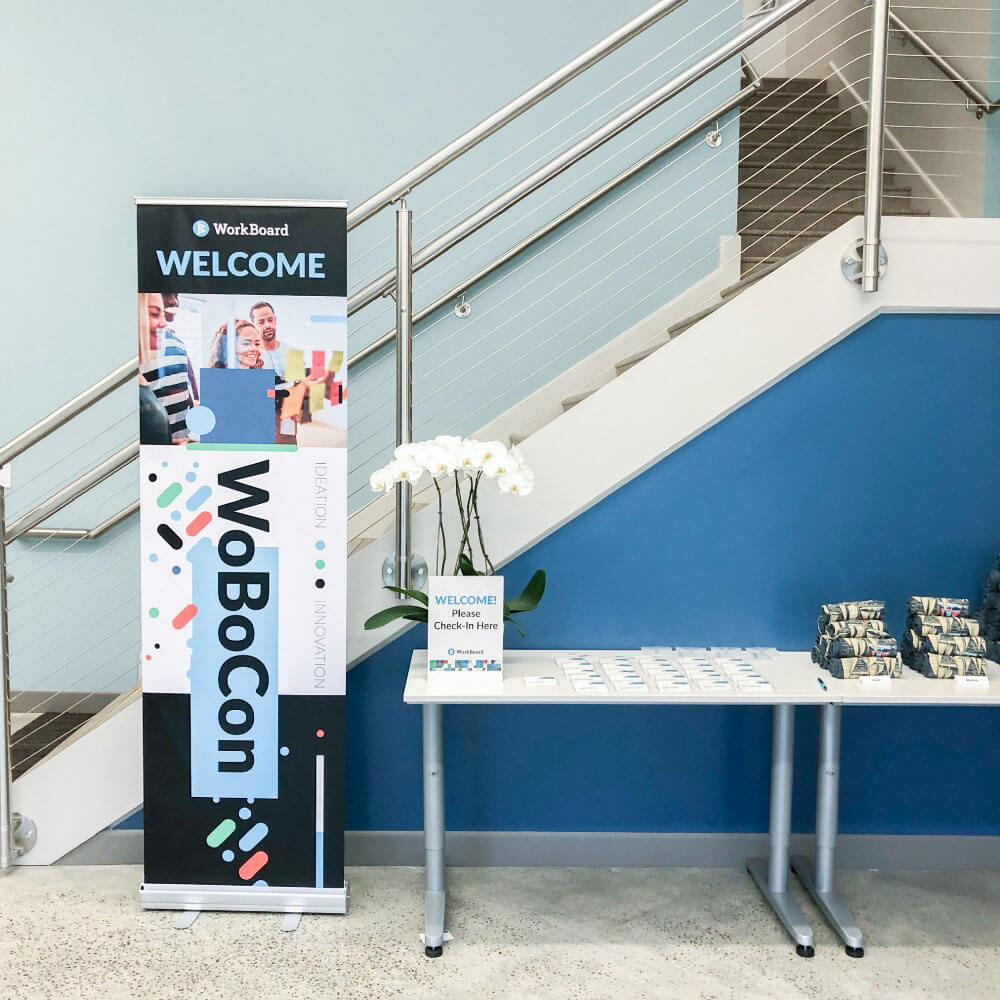 First Annual WoBoCon Event 2019
First Annual WoBoCon Event 2019
I designed WoBoCon as a whole to be based in a design thinking methodology. Rather than having users come to the event with specific solutions to work on, we started off the day by working on teams to brainstorm challenges, pain points, and insights.
It may be helpful to add here that the scope of topics for these challenges, pain points, and insights was centered around WorkBoard as a business solution (strategy management, staying aligned, staying accountable, driving growth in your organization). There was less of an emphasis on specific features in WorkBoard, but more on the day to day business challenges of people using the platform.
This first brainstorming activity allowed for a divergence of ideas and emphasized quantity over quality so that we had tons of post-its up on our whiteboards by the end of the exercise. WoBoCon participants included people from various industries, diverse skillsets and roles, different levels of OKR maturity in organizations, and ultimately different types of WorkBoard users. Having all of this insight in one room was incredible to listen to as a product designer and allows me to really cater to how many personas are feeling.
This kind of view into the lives of our customers was extremely valuable and insightful for all of our teams at WorkBoard — from engineering to sales to marketing to customer success, to really be aware and empathize with our customers and users.
The next exercise I had planned focused around grouping and convergence of these challenges, insights, and pain points. Participants started to look for themes, commonalities, and ideas that excited them to dive into.
Something that was key during these sessions was a heavy participation in each group of users by our internal WorkBoard teams. Being able to hear straight from users and to have a one-on-one connection with them helps keep a human centered culture within our company.
After grouping challenges we focused on developing How Might We statements and reframing key challenge areas as areas of opportunity.
This provided focus for each group for the rest of the day on what opportunity they were actually solving for.
For many participants, this was their first experience with design thinking and how might we statements which was so rewarding for me because all types of roles benefit. It’s a mode of thinking and researching and really being intentional, informed, and human centered that goes beyond just design.
Another exercise before jumping into prototyping took people deeper into the opportunity areas that they identified. At this point in the day, people were beginning to think of ideas and potential solutions, which they put up on their whiteboards along with specific wants, needs, and behaviors.
As you can probably guess, we collected all of these! When I am doing user research, these are very similar to the kinds of things that I look for when starting a project in a new area.
Being able to codesign with people who will end up using what they help codesign ultimately helps everyone involved.
During all of this ideating, we had some breaks for inspiration including hearing from some of our partners.
Hearing a specific use case and learning about another customer’s business were valuable experiences for WoBoCon participants thinking about their own organizations and for our WorkBoard team in understanding a full rollout of people, process, and platform.
Wireframing, creating mockups, and prototyping encompassed the rest of the time during the hackathon. With the WorkBoard teams as support, attendees created prototypes of potential solutions to challenges and opportunities they identified earlier in the hackathon.
Teams were able to leverage their previous ideating and brainstorming to design solutions that considered who they were designing for, their specific needs, and what specific actions someone would need to take and perform to realize value in that solution.
At the end of the hackathon, teams presented their thoughtful prototypes to the larger group as well as WorkBoard team members.
Each team received ratings from the group, and prizes were awarded according to audience voting.
This kind of light competition was fun for all of the teams after lots of hard work, and I am so happy with how all of the prototypes turned out and loved seeing the creators speak to them and why they would be impactful.
My two favorite parts of this whole experience have been:
- Seeing the unique ways that people are using the product that I didn’t even know about
- Co-designing with people to imagine how the future of the product might look
Thanks for an amazing designathon, hackathon, and WoBoCon for all who attended, and looking forward to the next opportunity to get our users in a room together to succeed and learn together.






